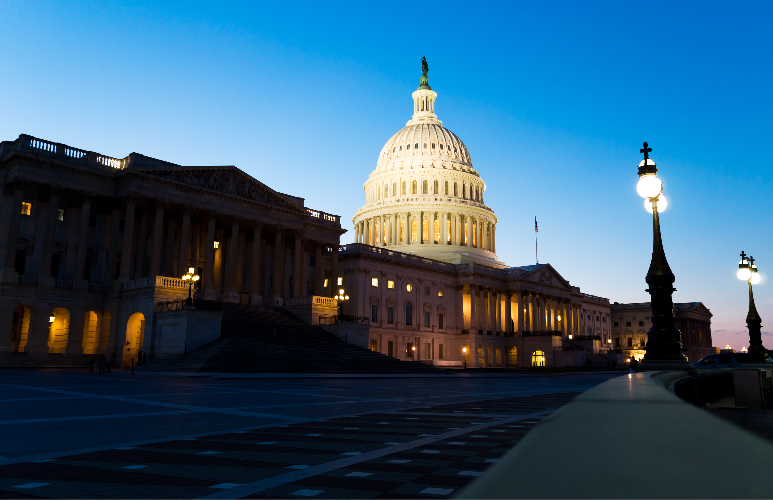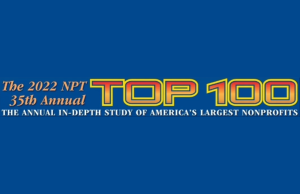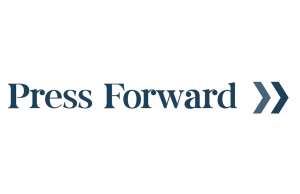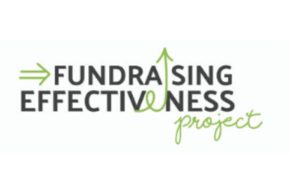Nonprofit advocates were sending warnings even before the ink was dry on the Tax Cuts and Jobs Act (TCJA) of 2017. There was language in the bill requiring tax-exempt organizations to increase Unrelated Business Taxable Income (UBTI) reporting by the amount of employee parking expenses that would be non-deductible if they were subject to the same deduction disallowance rules as taxable entities.
Nonprofit advocates and lobbyists were unsuccessful in getting the language out of the final bill and immediately began trying to get it reversed. Just about every lawmaker agreed there needed to be a change.
It still took two years to reverse.
Lobbying is not for the faint of heart on any level – federal, state or local. It is such a challenge that fewer than 3 percent of nonprofits report on the federal Form 990 that they lobby to advance their missions, according to data crunching by the National Council of Nonprofits (NCN).
“That demonstrates the failure of nonprofit advocacy trainings, enlightenment programs for attorneys and accountants, and a persistent fixation on overhead ratios, rather than impact and progress,” said David L. Thompson, vice president of public policy at the NCN. “But as nonprofit professionals, we are, by definition, optimists. So let’s treat 2020 as the year of fulfilling the vision of all charitable nonprofits using their advocacy muscles and public voices to advance their missions. A better America is bound to result.”
The assault on unrelated business tax on nonprofits has been relentless. “We saw it in the 1990s with proposals to tax investment income, which creeped up again in the early (George W.) Bush years, and of course most recently with the tax on fringe benefits,” according to Mary Kate Cunningham, vice president of public policy for the American Society of Association Executives (ASAE).

“I try to remember to pause before I Tweet. I practice mindful breathing when I’d like to scream. I remember that not everything is personal, not everyone is informed.”
“The FY 2000 budget plan proposed by the Clinton administration and the FY2001 budget plan (George W. Bush’s first) included a proposal to tax the investment income of trade associations. By the time Bush released his 2002 budget plan, they removed that proposal because there was no support,” she explained. The provision, dubbed an “anti-association” tax by ASAE, was proposed in the previous two fiscal year budget proposals, but was beaten down by the association community. “So far, we have been fairly successful in beating these back, but we know that the IRS and Treasury are always looking at the UBIT statute to see what else could be included,” said Cunningham.

“I try to remember to there is a lot more noise now, and it’s harder to get through.”
The tax reform bill also fundamentally changed tax deductions for charitable giving. “I think my biggest disappointment was not being able to help the nonprofit community make a compelling enough case to lawmakers about the harm the 2017 tax code overhaul would do to nonprofit giving,” said Peter Gordon, director of federal affairs, of Americans for the Arts. “It dramatically reduced the number of taxpayers that would be eligible to receive the charitable tax deduction as the new law decreased the amount of people who would be itemizing on their tax returns,” he said, adding that the charitable deduction is only available to those who itemize.
Lobbying and advocacy focus on regulation but it’s really targeting money. Take for example the changes in rules for the Combined Federal Campaign (CFC). “Through regulations, the federal Office of Personnel Management (OPM) took over control of the CFC from the private charities that used to run it. OPM contracted operations of the CFC out to for-profit companies that were, of course, driven by profit rather than securing donations or advancing a charitable mission,” explained Steve Taylor, senior vice president and counsel for public policy, at United Way Worldwide (UWW).
“To pay for the contracts, OPM began charging charities to participate in the CFC. As a result, donations to the CFC — and the participating charities — have plummeted. The number of charities benefiting from the CFC has dropped from over 20,000 to 6,500. Charities have lost tens of millions of dollars in donations annually because of OPM’s power grab,” he said.
There is a nuanced difference between advocacy and lobbying. “Advocacy is an umbrella term that covers all aspects of influencing public opinion and public policy. At the heart of it, advocacy is education, the act of educating people about the issues your organization cares about,” said Chris Vincent, vice president, government relations and advocacy for Habitat For Humanity. “I see lobbying as a subset of advocacy that entails specific efforts — both direct and grassroots — to influence whether a legislator takes a position, or supports or opposes a piece of legislation.”
Danielle Clore, executive director and chief executive officer of the Kentucky Nonprofit Network, (KNN) also sees the process as education. “Kentucky’s General Assembly members are ‘citizen legislators’ and as such, they are presented with an enormous amount of information to digest and act on in limited timeframes and often, with limited staff support for research,” she said. “While officials might not always take action or might not take action in the way we’d prefer, it’s an opportunity and obligation that is essential to mission delivery and impact — just as important as effective service delivery.”
Thomas P. “Tip” O’Neill, the legendary speaker of the U.S. House of Representatives, lived by the rule and wrote the book All Politics is Local. That’s exactly how Kate Rubalcava, chief executive of the Utah Nonprofits Association, got started in the business. “I became involved in advocating for issues as a resident in my community. From my mom and her involvement in community, I learned as a young girl how important it was to be involved in community affairs and to make sure that all voices were heard when decisions were being made,” she said.

“Advocacy needs to be both proactive and reactive. We always have our goals that we need to be pushing, and we also need to be prepared to respond to developments on the ground.”
It all started in roughly 2000. “I was upset about local policies impacting my neighborhood and the lack of support from municipal government. After talking with my mom about my concerns she reminded me of the many ways I could speak out and the importance of doing so. I found out when the mayor was next going to host a community forum. I wrote a speech, showed up early and waited for my opportunity to speak,” she said.

“Nonprofit advocacy is not a part-time avocation; it takes patience, perseverance, and a profound sense of purpose.”
“Reflecting on it now, I was so young and inexperienced. I demanded that they listen to my concerns and while everyone else was given a standard time limit for comments no one stopped me,” she said. “I consider this my launch into nonprofit/community service/advocacy because it was the first time I had really acted upon something that meant so much to me. From that point on I was offered board positions and I was even invited to apply for a position within urban planning at the city.”
The difference between advocacy and lobbying, according to Rubalcava, is rooted with information and how it’s shared or talked about. “To advocate for something means that you want to share with others what you know about a topic, organization, or policy. You are essentially spreading education around it. And to lobby for something means that there is a policy or law that either needs changing (or not but others do) and you are actively working to solidify a position.”
Tax issues are also found on the state level, said Rubalcava. “Currently, a problem the state legislature is trying to fix is balancing the budget for the future, doing tax modernization and restructuring the tax base. Some things proposed could be viewed as harmful to certain subgroups of nonprofits,” she said.
In Kentucky, Clore is establishing what she calls a “nonprofit caucus.” The state is “in desperate need of revenue of all kinds,” she said. There is talk of expanding gaming past the current horse racing and lottery. “We are not asking members of the caucus to endorse a policy agenda. The focus, at least in the early phase, is education,” she said.
The idea is to not be starting at the primary education level each time the state legislature is gaveled into session. In even-numbered years, sessions of the Kentucky legislature may not last more than 60 legislative days, and cannot extend beyond April 15. In odd-numbered years, sessions may not last more than 30 legislative days, and cannot extend beyond March 30. Special sessions may be called at any time and for any duration by the governor.
Part of that education will involve the impact on nonprofits of a 2018 sales tax on admission to events that did not exempt nonprofits and those special events. “We are working on repeal of that,” Clore said.
Education and knowing who to leverage is vital in the changing nature of politics and adapting programs. “There has been a lot of staff turnover in Congress the past several years,” said Gordon. “When those transitions take place, they hand off things and then might reach out” to an advocate. Americans for the Arts is branching out services, for example, to programming for at-risk youth and is working with the U.S. Department of Defense for creative arts therapy for military personnel with traumatic brain injury, according to Gordon.
Education and getting the message out often is old school, said Thompson. “The jury is still out on whether ‘Twitter campaigns’ have any impact. They are fun to do and it’s exciting to see the lobbying messages flow in from all over the country, usually rolling east to west due to time zones,” Thompson said. “Likewise, use of video is questionable. Everybody does it but a large share of our target audience still feels it’s faster and easier to just read the text and move on.”
Still, it often isn’t easy to deal with the need for instant education and then the drip, drip, drip of action. “There is often much at play behind the scenes that I might not be aware of (not related to nonprofits). And I’m from Kentucky, so I occasionally finish a long day with a little bourbon,” said Clore.
Sometimes you have to raise your voice. “In my mind, it was inconceivable to serve the interests of communities in need and be silent to those with power, or can influence positive change with, and in those communities. Hopefully, the manner in which I lobby helps to dispel the distorted view of lobbying as a nefarious activity,” according to Michael Weekes, president and chief executive officer of The Providers’ Council in Boston, Mass.

“When it comes to opposing views, I don’t take it personally, but try to find a way to find common ground and use that to discuss the issue.”
Clore, Rubalcava, Taylor and Thompson all cited the U.S. Census as the big items on the lobbying and advocacy front for 2020. “So much of nonprofit funding, either through pass-through dollars or access to appropriate data, relies on a complete count for the census each year. Nonprofits will utilize census data for 10 years so it’s critically important that our state has all residents counted,” said Rubalcava.

“I believe that every person is an asset in their community which means that I believe that every person must have a voice.”
“Many nonprofit (leaders) don’t realize the impact of either, especially the census,” said Clore. “KNN and our partners are working on these issues, but the bandwidth of some nonprofit leaders to focus on issues outside of their day-to-day operations is an ongoing challenge.”
Rubalcava, Thompson and Weekes are watching the so-called “Johnson Amendment” very closely this election year. Congress first exempted nonprofits from taxation in 1894 but provisions have been added along the way, including that nonprofits could not engage in partisan, election-related activities. It got its more recent name in 1954 when then-Senate Minority Leader Lyndon Baines Johnson (D-Texas) offered electioneering as an amendment. There have been recent attempts to weaken the amendment to allow electioneering.
“The enormous effort to abolish the Johnson Amendment was a clarion call that some with charitable dollars want a greater role in the political arena,” said Weekes. “I think without the amendment as is, the role is fraught with perils as those well-resourced and/or are subject to negative influences, may have a disproportionately larger role in this democracy.”
Federal funding of the arts will be among Gordon’s top priorities. “Congress has done a tremendous job in passing bipartisan increases for the National Endowment for the Arts (NEA) in recent years, but there could and should be a bigger investment, especially with the large return each federal dollar given to the NEA generates in state, local, and private dollar matches,” said Gordon.
“In other federal agencies, the positive effects of art education, the effectiveness of creative arts therapies for service members and veterans with traumatic brain injury and psychological health conditions, and the impact arts-specific programming has on at-risk youth are all more-than-worthy investments in federal programs where the arts can be part of the solution,” Gordon said.
The big issue for Habitat for Humanity this year is the launch of “Cost of Home,” the organization’s first advocacy campaign in the U.S. “With 1 in 6 people paying more than 50 percent of their income on housing, housing affordability is a critical issue in need of action at the federal level by the next Congress and president,” said Vincent.
The advocacy menu is quite long at United Way Worldwide during 2020, according to Taylor. “We’ll be doing work on the census and voter engagement. We will be engaged in a coordinated campaign to expand the Earned Income Tax Credit. And, we will continue to work on issues surrounding access to healthcare,” he said.

“The extended time-frame can exhaust your grassroots and grasstops advocates out in the field. It is hard to keep the energy up. But it is necessary to stay actively engaged.”
Healthcare is a big item, as one might expect at The Providers’ Council. But there’s also a sector perception issue, according to Weekes. “I think we should prepare for increased distrust in our systems to ‘fix’ problems and a societal retrenchment of values that support ‘my brother’s keeper.’ If voters choose public officials who foster distrust and lead efforts to defund the safety net and/or denigrate the ‘helpers,’ we are in bigger trouble,” said Weekes. “I’m not sure how we regain our moral compass and return to caring for the most vulnerable among us, but we need to engage others in the vision of what a fair and just society should look like. I’m optimistic that we can do it, if we dare to act boldly together.”
There’s hard work and good causes but sometimes that isn’t enough. “For years, we pushed to expand the idea that U.S. foreign assistance should have a greater focus on the 1.6 billion people living in inadequate shelter,” said Vincent. “It’s an incredibly important issue and one that, unfortunately, does not get enough attention in the global development space.”

“An essential gauge in leadership is regulating the stress as change is often hard and not always welcomed even if it seems as a moral imperative to you.”
It is going to be an interesting year. “I understand philanthropic organizations face challenges in supporting advocacy/lobbying while also preserving their tax status, but change requires new thinking. … I think technology has enormous potential for positive change and can have a balancing effect on money and undue influence in this post- Citizens United period,” said Weekes.











